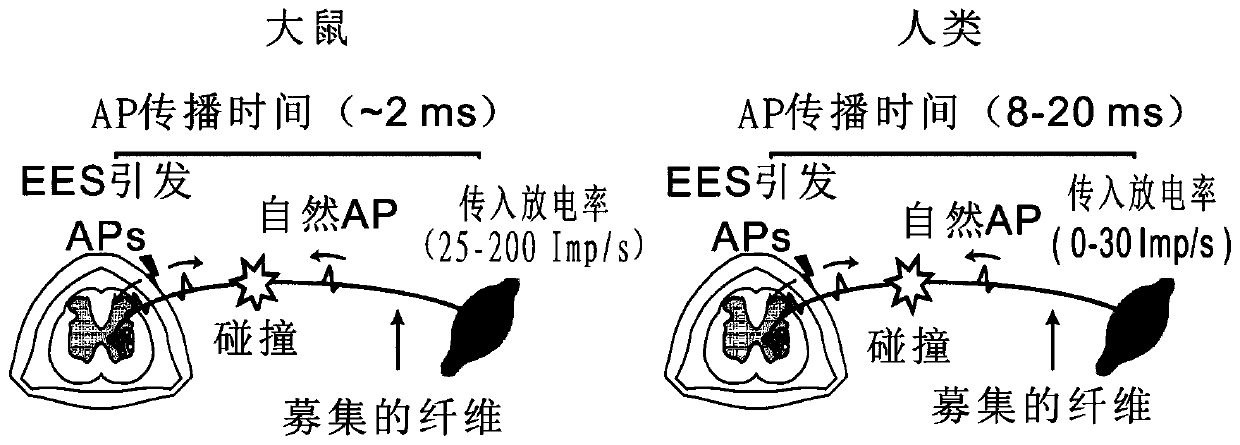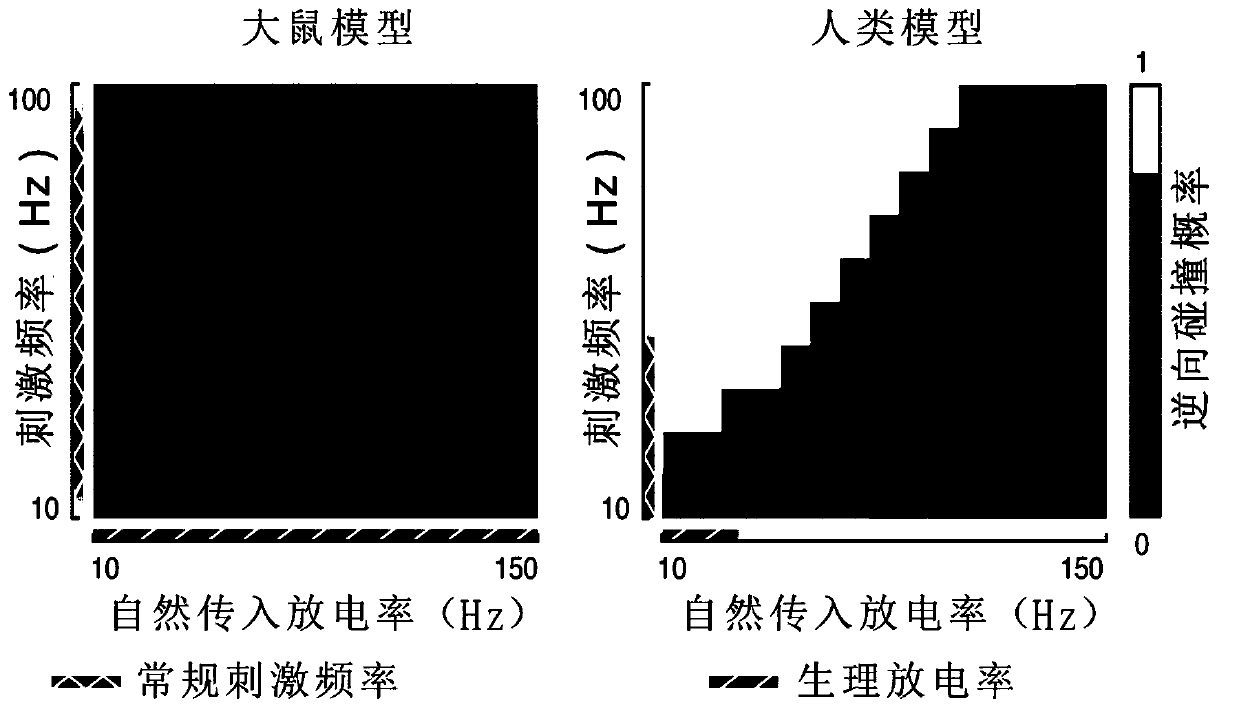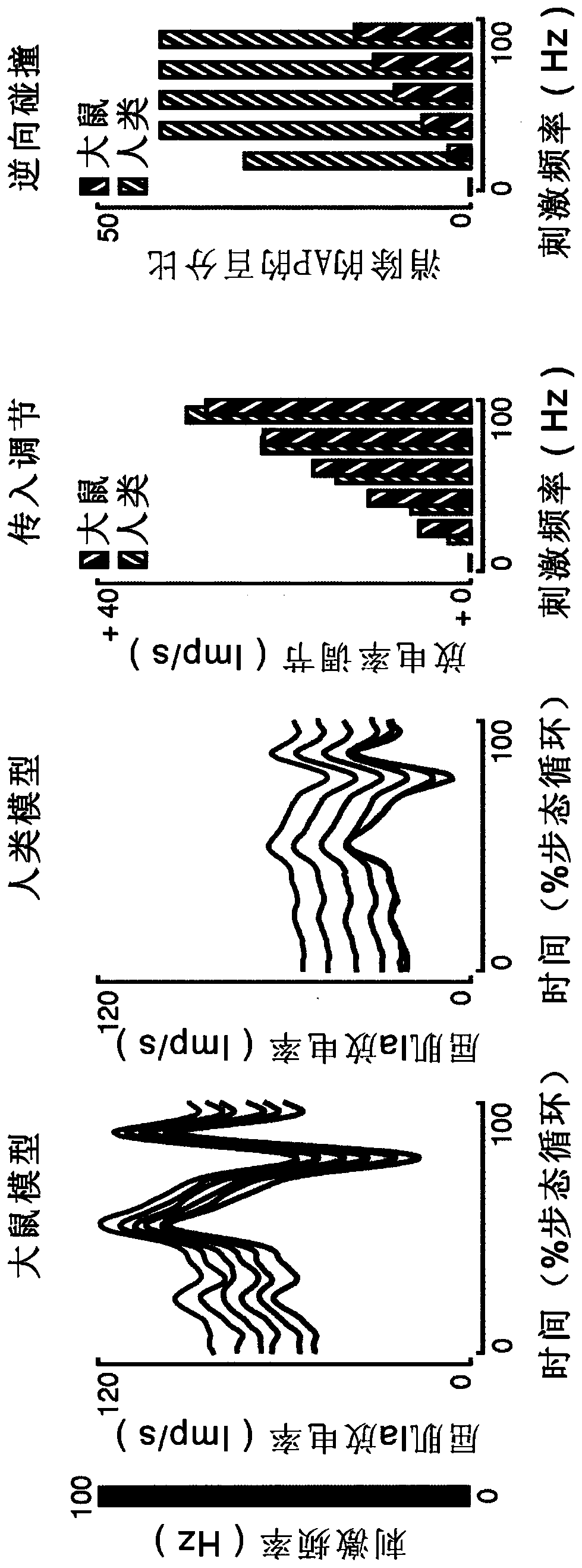A sensory information compliant spinal cord stimulation system for the rehabilitation of motor functions
A spinal cord stimulation, spinal cord technology, used in the recovery of motor function, the system of stimulating the spinal cord, and the field of sports injuries, can solve the problems of reducing the efficacy of the stimulation system, destroying the sensory information of the recruited fibers, etc., to achieve the effect of reducing the number of
- Summary
- Abstract
- Description
- Claims
- Application Information
AI Technical Summary
Problems solved by technology
Method used
Image
Examples
Embodiment 1
[0217] Assessing destructive interference in human spinal cord stimulation
[0218]Each pulse of electrical spinal cord stimulation elicits an action potential in recruited fibers that propagate anterogradely (ie, run along its axis in its natural normal direction) and retrogradely (in the opposite direction). For the duration of the transit time of a retrograde action potential to the periphery, the orthodromic activity in the same axon that naturally arises in the periphery during locomotion will be abolished, a phenomenon known as retrograde collision. For this reason, part of the natural sensory information that flows into the spinal cord during motor execution may collide with the retrograde action potential elicited along the nerve by stimulation and thus be counteracted by the stimulation. We hereafter refer to this interaction of electrical stimulation and sensory feedback information as destructive interference.
[0219] The probability of these reverse collisions oc...
Embodiment 2
[0225] Comparison between stimulation paradigms according to the present application and conventional stimulation protocols
[0226] Conventional spinal cord stimulation protocols for promoting walking function are derived from animal models, using frequencies from 20 to 50 Hz (Angeli et al., 2014; Danner et al., 2015) and amplitudes sufficient to elicit leg muscle activation with each stimulation pulse. As we have previously shown, with these stimulation frequencies, sensory information in electrically recruited fibers collides with evoked counteractivity. Considering that about 40% of Ia fibers need to be recruited to elicit a motor response via reflex circuits, it is clear that these types of stimulation protocols greatly reduce the amount of sensory feedback information that actually reaches the spinal cord. This sensory information is thought to be the source of motor control necessary to drive recovery of locomotion. For this reason, we hypothesized that a stimulation r...
Embodiment 3
[0237] Effects of high-frequency SCS on rodents
[0238] The disclosed stimulation paradigm relies on two independent mechanisms.
[0239] First, each Ia fiber has excitatory synaptic connections with all motor neurons of the muscle of the same name. For this reason, the recruitment of even a small number of fibers transmits stimulation to the entire motor pool.
[0240] Second, excitatory postsynaptic potentials (EPSPs) elicited by Ia fibers on motor neurons are characterized by a half-amplitude duration of approximately 4 ms (Burke R.E, 1968). This suggests that high-frequency recruitment of a small number of afferent fibers will trigger strong depolarization of motor neurons as continuous EPSPs will wrap up over time.
[0241] However, the maximum rate at which EPSPs sum up depends on the afferent refractory period, which may be too long to effectively depolarize motor neurons. Furthermore, rapid repetitive recruitment of Ia fibers will lead to homosynaptic depression of...
PUM
 Login to View More
Login to View More Abstract
Description
Claims
Application Information
 Login to View More
Login to View More - R&D
- Intellectual Property
- Life Sciences
- Materials
- Tech Scout
- Unparalleled Data Quality
- Higher Quality Content
- 60% Fewer Hallucinations
Browse by: Latest US Patents, China's latest patents, Technical Efficacy Thesaurus, Application Domain, Technology Topic, Popular Technical Reports.
© 2025 PatSnap. All rights reserved.Legal|Privacy policy|Modern Slavery Act Transparency Statement|Sitemap|About US| Contact US: help@patsnap.com



